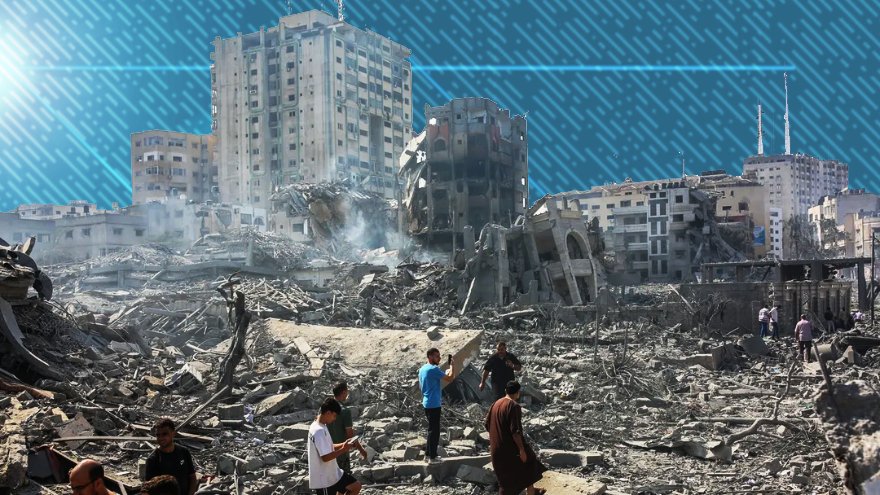As of Nov. 26, the Israeli Defense Forces (IDF) estimates that during the assault on Gaza, which has been ongoing in retaliation for the deadly Oct. 7 attack by Hamas, it has killed between 1,000 and 2,000 Hamas fighters out of a military force it says totals around 30,000. The Euro-Mediterranean Human Rights Monitor, which publishes information daily on the destruction taking place in Gaza, shows that as of Nov. 27, the IDF has killed 18,940 civilians, including 8,241 children and 4,126 women. The numbers could be underestimates because an unknown number of people remain buried under rubble. An additional 36,390 people have been injured and more than 1.7 million Palestinians have been displaced. Less than two months from when the latest conflict between the two factions began, the Israeli bombing campaign in Gaza has reportedly resulted in one of the highest combatant-civilian casualty ratios (roughly 13:1) of any war in modern history. Though wartime death tolls will never be exact, experts say that even a conservative reading of the Palestinian casualty numbers show the pace of civilian deaths occurring in Gaza has few precedents this century, The New York Times reported. “It’s beyond anything that I’ve seen in my career,” Marc Garlasco, a military adviser for the Dutch organization PAX and a former senior intelligence analyst at the Pentagon, told the Times. He added that to find a historical comparison for so many large bombs being dropped in a small area would require possibly going “back to Vietnam, or the Second World War.” During a single week of the latest conflict, Israel dropped more bombs on Gaza than the U.S. dropped on Afghanistan over the course of a year. Brian Castner, a weapons investigator for Amnesty International and a former explosive ordinance disposal officer in the U.S. Air Force, told the times that the bombs being used against Palestinians are larger than what the U.S. used when fighting ISIS in cities like Mosul and Raqqa. “They are using extremely large weapons in extremely densely populated areas,” Castner said of Israeli forces. “It is the worst possible combination of factors.” Israel repeatedly claims it tries to limit civilian casualties. An Israeli spokesperson told the Times, “We do a lot in order to prevent and, where possible, minimize the killing or wounding of civilians. We focus on Hamas.” Stéphane Dujarric, spokesperson for the United Nations Secretary-General, said in a Nov. 27 statement, “Seven weeks of hostilities in Gaza and Israel have taken an appalling toll that has shocked the world.” Dujarric added, the Secretary-General “urges all States to use their influence to end this tragic conflict and support irreversible steps towards the only sustainable future for the region: a two-state solution, with Israel and Palestine living side by side, in peace and security.” Global leaders are now warning that civilian, noncombatant deaths from disease could outpace the deaths caused by direct warfare. “It is not just the hospitals, everybody everywhere has dire health needs now, because they are starving, because they lack clean water, they are crowded together, they are in terror so they have massive mental health needs. And there is a continuing rise in outbreaks of infections disease [sic],” said World Health Organization spokesperson Margaret Harris. “Eventually, we will see more people dying from disease than we are even seeing from the bombardment, if we are not able to put back this health system and provide the basics of life. Food, water, medicines and of course fuel to operate hospitals,” she added.New data reveals the extent that non-combatant civilians are being killed in Gaza as advocacy and human rights groups worldwide demand a ceasefire.
Loading...
Israel /
Civilian-to-Combatant Kill Ratio In Gaza Has 'Few Precedents' In Modern History
More than 18,000 civilians have allegedly been killed, compared to roughly 1,500 Hamas fighters

*For corrections please email [email protected]*
